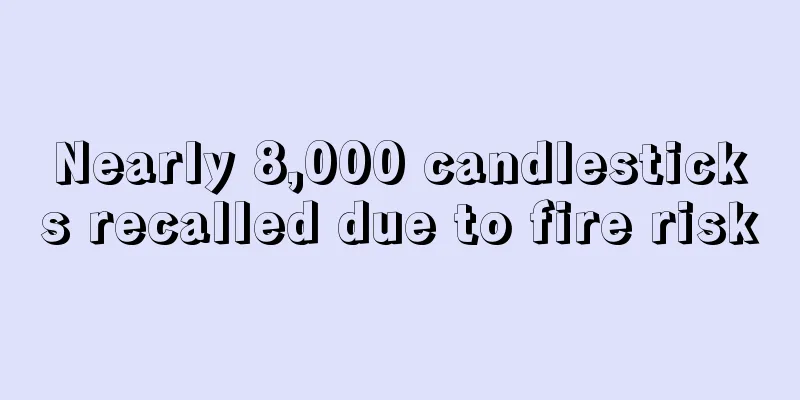What is 3C Certification? 3C Certification Review, Features

|
3C certification is the abbreviation of China Compulsory Certification, which is abbreviated as CCC. Household appliances, ITE and office equipment, and audio and video products all need 3C certification.
About 3C Certification On December 3, 2001, the General Administration of Supervision, Inspection and Quarantine of China and the Certification and Accreditation Administration of China jointly issued the "Regulations on the Administration of Compulsory Product Certification", implementing the compulsory certification management of "unified catalog, unified standards and assessment procedures, unified signs and unified fees" for 19 categories and 132 products listed in the catalog. The original "CCIB" certification and "Great Wall CCEE certification" were unified into "China Compulsory Certification" (English name: China Compulsory Certification), with the English abbreviation "CCC", so it is also referred to as "3C" certification. The "3C" certification was fully implemented from May 1, 2002 (later postponed to August 1), and the original product safety certification and import safety quality licensing system were abolished at the same time. The current mandatory product certification systems that have been announced include the "Regulations on the Management of Compulsory Product Certification", "Management Measures for Compulsory Product Certification Marks", "The First Batch of Products to Implement Compulsory Product Certification" and "Notice on Issues Related to the Implementation of Compulsory Product Certification". The first batch of products included in the mandatory certification catalog include wires and cables, switches, low-voltage electrical appliances, power tools, household appliances, car tires, truck tires, audio and video equipment, information equipment, telecommunications terminals, motor vehicles, medical equipment, safety and security equipment, etc. So far, a number of products have been released, and in addition to the first batch of catalogs, paints, ceramics, automotive products, toys and other products have been added.
significance The 3C mark is not a quality mark, but only a basic safety certification. It is a product conformity assessment system implemented by the Chinese government in accordance with relevant WTO agreements and international practices to protect the lives of consumers, the lives of animals and plants, the environment, and national security, in accordance with laws and regulations.
Applicable categories 1. Wires, cables and components; 2. Circuit switches and devices for protecting or connecting electrical appliances; 3. Low voltage motor equipment; 4. Low power motor; 5. Power tools; 6. Electric welding machine; 7. Household and similar application equipment; 8. Audio and video equipment; 9. Information technology equipment; 10. Lamps; 11. Automobile and safety parts; 12. Automobile tires; 13. Safety glass; 14. Agricultural machinery; 15. Telecommunication terminal equipment; 16. Firefighting equipment; 17. Detectors of security equipment; 18. Wireless LAN products; 19. Decoration materials; 20. Children, toys and supplies. For specific product information, please refer to the official website of the China National Certification and Accreditation Administration .
3C Certification Conditions Let us take a closer look at the conditions that companies must meet to obtain 3C certification. 1. The company has a business license; 2. The products produced by the company are included in the list of mandatory products for 3C certification; 3. The company must have its own factory; 4. The company must have certain financial strength; 5. The company has relevant documents, production environment, warehouse management and other important documents.
Certification Process Basic situation: ·CCC certification application is divided into written application and online application; The application contains relevant information about the applicant, manufacturer, production plant and product; Each model unit of the product should be applied for separately; · Products of the same model but from different manufacturers should also be applied for separately. The specific process is as follows: Stage 1: Application Processing After receiving an application that meets the requirements, the certification body will issue an acceptance notice to the applicant, instructing the applicant to send or mail the relevant documents and information. ·At the same time, the certification body sends relevant charges and notifications. The applicant shall provide the information to the certification body as required. ·After the applicant pays, fill in the payment voucher as required. [Note: The enterprise should generally provide the following information: general assembly drawing, electrical schematic diagram, circuit diagram, etc.; list of key components and/or main raw materials; description of the differences between various models of products in the same application unit; other required documents; CB certificate and report (if any)]. Phase 2: Document Review During the document review phase, product certification engineers need to divide the application into units. After unit division, if sample testing is required, the product certification engineer will send a sample delivery notice and corresponding payment notice to the applicant, and at the same time, notify the applicant to send a sample receipt notice to the corresponding testing agency. Phase 3: Sample Receipt The samples are sent directly to the designated testing agency by the applicant. After paying, the applicant shall fill in the payment voucher as required. The testing agency shall inspect and accept the samples received and fill in the sample acceptance report. For unqualified samples, a sample rectification notice shall be issued and the sample acceptance report shall be filled in after rectification. After the sample is accepted, the testing agency fills in the sample testing progress sheet and reports it to the certification agency. After receiving the sample testing progress and confirming that the applicant has paid all the relevant fees, the certification body will issue a formal acceptance notice to the applicant and a testing assignment letter to the testing agency, and the sample testing will officially begin. Phase 4: Sample testing The work that enterprises should do during the type test stage is: send test samples, required parts and technical information, understand the progress of the test, and if unqualified items appear, make timely corrections in accordance with the sample test correction notice. After the sample test is completed, the testing agency fills in the sample test result notification. The testing agency also transmits the test report and other information to the certification agency. Stage 5: Factory Inspection For applications that require factory inspection, the testing agency organizes the factory inspection. The preliminary preparations for factory inspection include: agreeing with the certification body on the date and personnel for the factory inspection; preparing documents and records in accordance with the requirements of the factory inspection; and arranging for the production line to start during the factory inspection. ·The enterprise shall strictly follow the requirements of the factory inspection and cooperate with the factory inspection team. According to the confirmed non-conformities and the factory inspection conclusions, the rectification of non-conformities shall be completed as soon as possible. Phase 6: Conformity Assessment Product certification engineers collect and organize the results of each stage and conduct a preliminary evaluation. The conformity assessment personnel shall re-evaluate the above results. Phase 7: Certificate Collection The director of the certification body issues the certificate. The applicant prints the receipt and goes to the certification body to pick up the certificate or asks for it to be mailed. Post-certification supervision If the product is not consistent with the sample of type test, it should be confirmed by the certification body before production. · The dates for regular surveillance should be agreed with the certification body. During the supervision, the production line should be in normal production, and there should be certified products in the factory or a certain amount of products available for sampling (such as: outside warehouses, markets, etc.). ·Prepare documents and records required for supervision. ·Confirm non-conformities and monitoring conclusions. Complete rectification of non-conformities as soon as possible. |
<<: What is Amazon1688 Forum? Amazon1688 Forum Review, Features
>>: What is BEISU Community? BEISU Community Review, Features
Recommend
What is Junwei International? Junwei International Review, Features
Shenzhen Junwei International Freight Forwarding ...
Thousands of people on strike at European ports, sellers' goods may be delayed!
As the new peak season approaches, sellers are sp...
Amazon releases the trend of cross-border intellectual property protection for Chinese sellers
With the arrival of the 22nd World Intellectual P...
Amazon employee is angry after being fired for taking bereavement leave!
In the past, we occasionally saw news like this i...
Involving 257 hot words, Google reveals Americans' shopping trends in the post-epidemic era!
Recently, Google released Americans ' search ...
What is Shenzhen Cross-border E-commerce Association? Shenzhen Cross-border E-commerce Association Review, Features
Shenzhen Cross-Border E-Commerce Association (Eng...
What is Diapers? Diapers Review, Features
<span data-docs-delta="[[20," ","...
What is Flipdent? Flipdent Review, Features
Flipdent is an online marketplace for dental produ...
A large number of Amazon sellers are losing reviews like crazy. Is a new round of rectification coming?
Seller reviews plummet after international review...
411 small and medium-sized brands achieved new breakthroughs on Tmall Double 11
As of 00:45 on November 11, 411 small and medium-...
What is nom nom now? nom nom now Review, Features
Nom Nom Now is a store that focuses on providing f...
Protests against foreign e-commerce companies may lead to another wave of strikes in India
Last Friday, India's CAIT called on Indian me...
Temu is rising in another country, and local platforms are fighting back!
Amid rising prices and high commodity inflation i...
What is BlockDaemon? BlockDaemon Review, Features
BlockDaemon is committed to providing blockchain ...
What is HitTail? HitTail Review, Features
HitTail is an SEO tool that specializes in long-t...









